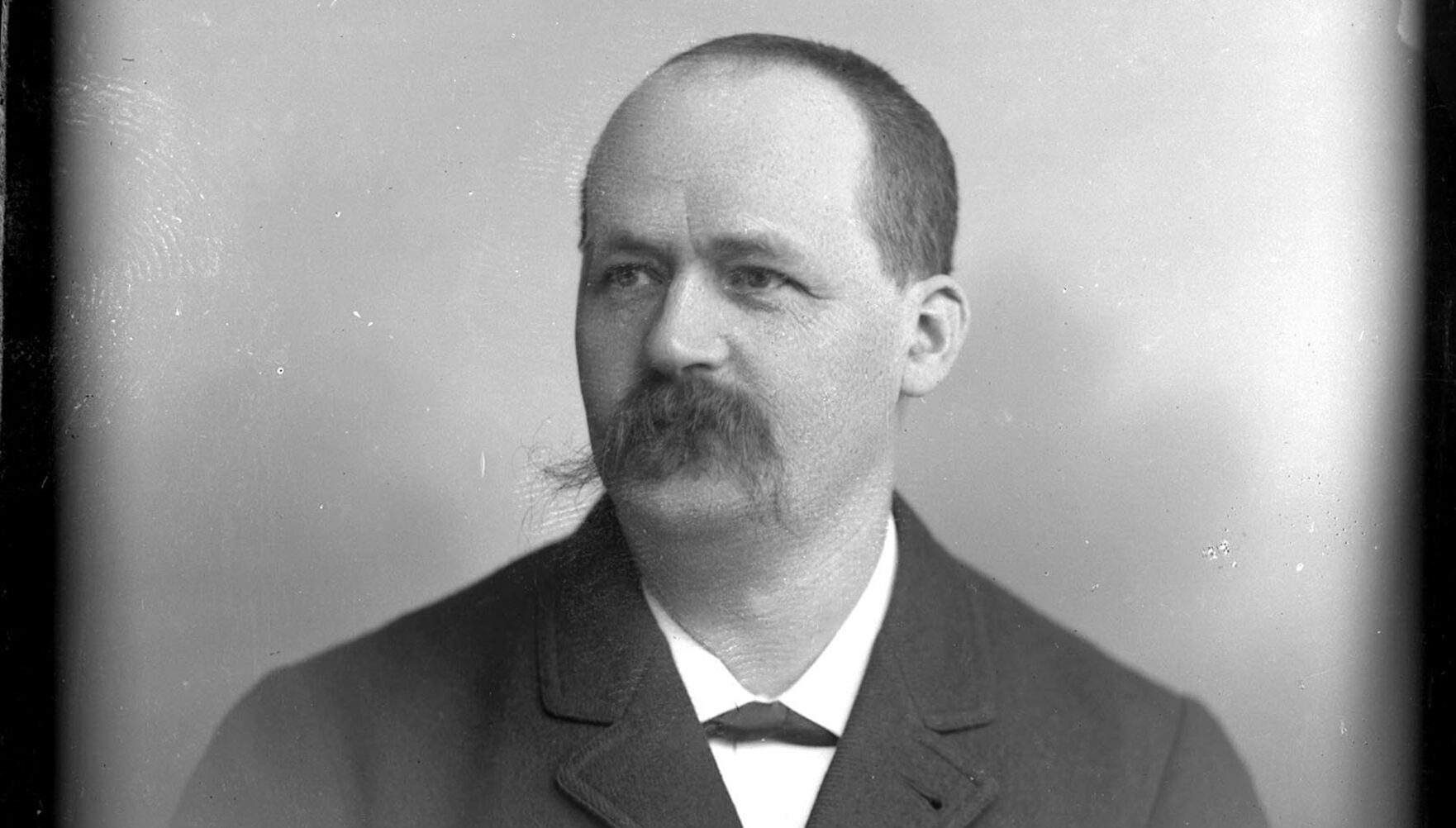
Who was Theodore Flournoy?
Theodore Flournoy (1854-1920), a Swiss psychologist and philosopher, made significant contributions to the fields of empirical psychology and psychical research at the turn of the 20th century. His work bridged the gap between scientific psychology and the study of paranormal phenomena, influencing the development of both fields. Flournoy’s innovative approaches to the study of consciousness, mediumship, and religious experiences have left a lasting impact on psychology, parapsychology, and the philosophy of science.
In this comprehensive essay, we will explore Flournoy’s key contributions, his methodological approaches, and the enduring significance of his work for contemporary psychology and psychical research. We will examine how his ideas have shaped our understanding of human consciousness, the nature of religious and mystical experiences, and the scientific investigation of anomalous phenomena.
-
Flournoy’s Empirical Approach to Psychology
2.1. The Principle of Empirical Psychology
At the heart of Flournoy’s approach to psychology was his commitment to empirical observation and scientific rigor. Unlike many of his contemporaries who relied heavily on introspection or philosophical speculation, Flournoy insisted on the importance of gathering concrete data and employing systematic methods of investigation. This empirical stance set him apart in the early days of psychology and laid the groundwork for more scientific approaches to the study of mental phenomena.
Flournoy’s empirical approach was particularly evident in his studies of mediumship and other paranormal claims. Rather than dismissing these phenomena outright or accepting them uncritically, he sought to investigate them using the tools of scientific psychology. This balanced approach allowed him to make significant contributions to both mainstream psychology and psychical research.
2.2. The Study of Individual Differences
Flournoy was one of the early proponents of the study of individual differences in psychology. He recognized that understanding the variations in human cognition, personality, and behavior was crucial for developing a comprehensive science of mind. His work in this area presaged later developments in differential psychology and laid the groundwork for more sophisticated approaches to personality assessment and cognitive testing.
In his investigations of mediums and other individuals claiming paranormal abilities, Flournoy paid close attention to individual differences in suggestibility, imaginative capacity, and dissociative tendencies. This nuanced approach allowed him to develop more sophisticated explanations for seemingly anomalous phenomena, taking into account the unique psychological characteristics of the individuals involved.
-
From India to the Planet Mars: A Landmark Study in Mediumship
3.1. The Case of Hélène Smith
Flournoy’s most famous work, “From India to the Planet Mars” (1900), detailed his extensive study of the medium Hélène Smith (pseudonym for Catherine-Elise Müller). This groundbreaking investigation combined careful observation, psychological analysis, and historical research to explore Smith’s purported abilities to channel spirits and access information about past lives and other worlds.
Over the course of several years, Flournoy documented Smith’s trance states, automatic writings, and verbal productions, which included elaborate narratives about life on Mars, reincarnation in India, and communication with spirits. Rather than simply accepting or rejecting these claims, Flournoy sought to understand the psychological processes underlying Smith’s experiences.
3.2. Cryptomnesia and the Subliminal Self
Through his analysis of Smith’s case, Flournoy introduced the concept of cryptomnesia, or hidden memory. He proposed that many of the seemingly paranormal elements in Smith’s productions could be explained by the unconscious retrieval and recombination of forgotten information from her past experiences and education. This concept has since become an important tool in understanding various forms of apparent psychic phenomena and has influenced theories of creativity and problem-solving in cognitive psychology.
Flournoy’s work on the Smith case also contributed to the development of theories about the subliminal self, building on the ideas of Frederic Myers and William James. He argued that much of human mental life occurs below the threshold of conscious awareness, and that these subliminal processes can give rise to complex and seemingly miraculous phenomena under certain conditions.
-
The Psychology of Religion and Mystical Experiences
4.1. Empirical Approach to Religious Phenomena
Flournoy was one of the pioneers in the psychological study of religion, advocating for an empirical and non-reductive approach to religious and mystical experiences. In his work “The Principles of Religious Psychology” (1903), he argued for the importance of studying religious phenomena as psychological facts, without necessarily endorsing or rejecting their metaphysical claims.
This approach allowed Flournoy to investigate religious experiences, including conversion, mystical states, and prayer, with scientific rigor while maintaining respect for the subjective significance of these experiences for individuals. His work in this area influenced later researchers in the psychology of religion, including William James and Edwin Starbuck.
4.2. The Variety of Religious Experiences
Flournoy’s studies of religious experiences emphasized their diversity and complexity. He recognized that religious phenomena could not be reduced to a single psychological mechanism or explanation but required a nuanced understanding of individual differences, cultural contexts, and varying states of consciousness.
This appreciation for the variety of religious experiences was reflected in his careful documentation of different forms of mystical states, visionary experiences, and spiritual practices. Flournoy’s work in this area contributed to a more sophisticated understanding of the relationship between psychology and spirituality, influencing later developments in transpersonal psychology and the study of altered states of consciousness.
-
Contributions to Parapsychology and Psychical Research
5.1. Scientific Investigation of Anomalous Phenomena
Flournoy’s approach to the study of paranormal claims set a new standard for scientific rigor in psychical research. He insisted on careful documentation, controlled conditions, and critical analysis of alternative explanations. This methodological approach helped to establish parapsychology as a more respectable field of inquiry and influenced later researchers in their attempts to bring scientific methods to bear on anomalous phenomena.
At the same time, Flournoy maintained an open-minded stance towards the possibility of genuinely paranormal phenomena. He argued that scientists should not dismiss extraordinary claims out of hand but should investigate them thoroughly using the best available methods. This balanced approach continues to influence debates about the proper scientific stance towards claims of psi abilities and other anomalous experiences.
5.2. The Survival Hypothesis and Mediumship Research
Flournoy’s work on mediumship, particularly his studies of Hélène Smith, contributed significantly to the ongoing debate about the possibility of survival after death. While he was skeptical of many specific claims of spirit communication, Flournoy recognized the importance of investigating these phenomena thoroughly and without prejudice.
His careful analysis of the psychological processes involved in mediumistic productions, including the roles of cryptomnesia, dissociation, and unconscious creativity, provided a more nuanced framework for understanding these phenomena. This approach influenced later researchers in their attempts to distinguish between genuine paranormal effects and various forms of non-paranormal explanations for mediumistic phenomena.
-
The Legacy of Theodore Flournoy
6.1. Influence on Psychology and Parapsychology
Flournoy’s work has had a lasting impact on both mainstream psychology and parapsychology. His emphasis on empirical methods, individual differences, and the importance of studying anomalous experiences has influenced generations of researchers in both fields. In particular, his contributions to the psychology of religion, the study of dissociative phenomena, and the investigation of claimed paranormal abilities continue to be relevant to contemporary research.
In the field of parapsychology, Flournoy’s balanced and rigorous approach set a standard for scientific investigation that continues to be influential. His work helped to establish parapsychology as a legitimate area of scientific inquiry, even as it provided tools for critically examining extraordinary claims.
6.2. Relevance to Contemporary Debates
Many of the issues that Flournoy grappled with in his research remain relevant to contemporary debates in psychology, philosophy of mind, and the study of consciousness. His insights into the nature of the subliminal self and the complexities of human consciousness continue to resonate with current research on implicit cognition, altered states of consciousness, and the neural correlates of subjective experience.
Flournoy’s work on religious and mystical experiences also remains relevant to ongoing discussions about the relationship between science and spirituality, the nature of transcendent experiences, and the psychological basis of religious belief and practice. His non-reductive approach to these phenomena offers a model for how scientists can engage with profound human experiences without reducing them to mere epiphenomena.
-
Legacy
Theodore Flournoy’s contributions to psychology and psychical research represent a unique synthesis of empirical rigor, open-minded inquiry, and psychological insight. His work bridged the gap between mainstream scientific psychology and the investigation of extraordinary human experiences, setting a standard for balanced and thorough research that continues to inspire scholars today.
As we continue to grapple with questions about the nature of consciousness, the limits of human perception and cognition, and the relationship between mind and reality, Flournoy’s legacy offers valuable lessons. His commitment to empirical observation, his appreciation for the complexity of human experience, and his willingness to engage seriously with extraordinary claims provide a model for how we might approach the frontiers of psychological science in the 21st century.
By combining careful scientific methods with a deep respect for the richness of human subjectivity, Flournoy’s work points the way toward a more comprehensive and nuanced understanding of the human mind and its potential. As we face new challenges and opportunities in the study of consciousness and anomalous experiences, the pioneering spirit and methodological innovations of Theodore Flournoy continue to offer guidance and inspiration.
Read More Depth Psychology Articles:
Taproot Therapy Collective Podcast
Influences on Jung
Bibliography
- Alvarado, C. S. (2010). Classic Text No. 84: ‘Subliminal Consciousness’ by Théodore Flournoy (1911). History of Psychiatry, 21(1), 85-88.
- Alvarado, C. S., & Evrard, R. (2013). Nineteenth century psychical research in mainstream journals: The Revue Philosophique de la France et de l’Etranger. Journal of Scientific Exploration, 27(4), 655-689.
- Borch-Jacobsen, M. (1994). Théodore Flournoy: Du spiritisme considéré comme un roman psychologique. L’Homme, 34(130), 183-189.
- Caratelli, G. (1996). Psicologia psicoanalisi parapsicologia. Rome: Sovera.
- Carpenter, W. B. (1877). Mesmerism, spiritualism, &c.: Historically and scientifically considered. New York: D. Appleton and Company.
- Claparède, E. (1921). Théodore Flournoy: Sa vie et son oeuvre. Archives de Psychologie, 18, 1-125.
- Crabtree, A. (1993). From Mesmer to Freud: Magnetic sleep and the roots of psychological healing. New Haven, CT: Yale University Press.
- Deonna, W. (1932). De la planète Mars en terre sainte: Art et subconscient, un médium peintre: Hélène Smith. Paris: E. de Boccard.
- Eeden, F. V. (1913). A study of dreams. Proceedings of the Society for Psychical Research, 26, 431-461.
- Ellenberger, H. F. (1970). The discovery of the unconscious: The history and evolution of dynamic psychiatry. New York: Basic Books.
- Flournoy, T. (1896). Notice sur le laboratoire de Psychologie de l’Université de Genève. American Journal of Psychology, 7(3), 443-444.
- Flournoy, T. (1900). From India to the planet Mars: A study of a case of somnambulism with glossolalia. New York: Harper & Brothers.
- Flournoy, T. (1902). Nouvelles observations sur un cas de somnambulisme avec glossolalie. Archives de Psychologie, 1, 101-255.
- Flournoy, T. (1903). Les principes de la psychologie religieuse. Archives de Psychologie, 2, 33-57.
- Flournoy, T. (1911). Spiritism and psychology. New York: Harper & Brothers.
- Flournoy, T. (1915). Une mystique moderne (documents pour la psychologie religieuse). Archives de Psychologie, 15, 1-224.
- Flournoy, T. (1917). The philosophy of William James. New York: Henry Holt and Company.
- Gauld, A. (1968). The founders of psychical research. London: Routledge & Kegan Paul.
- Geley, G. (1920). From the unconscious to the conscious. New York: Harper & Brothers.
- Giorgi, A. (1990). Phenomenological psychology as a human science. Annals of Theoretical Psychology, 7, 241-253.
- Gurney, E., Myers, F. W. H., & Podmore, F. (1886). Phantasms of the living (2 vols.). London: Trübner & Co.
- James, W. (1890). The principles of psychology (2 vols.). New York: Henry Holt and Company.
- James, W. (1901). Frederic Myers’s service to psychology. Proceedings of the Society for Psychical Research, 17, 13-23.
- James, W. (1902). The varieties of religious experience: A study in human nature. New York: Longmans, Green, and Co.
- Jung, C. G. (1975). Letter to Théodore Flournoy, 8 February 1910. In G. Adler & A. Jaffé (Eds.), C. G. Jung Letters, Vol. 1: 1906-1950 (pp. 510-511). Princeton, NJ: Princeton University Press.
- Kelly, E. F., Kelly, E. W., Crabtree, A., Gauld, A., Grosso, M., & Greyson, B. (2007). Irreducible mind: Toward a psychology for the 21st century. Lanham, MD: Rowman & Littlefield.
- Le Clair, R. C. (Ed.). (1966). The letters of William James and Théodore Flournoy. Madison, WI: University of Wisconsin Press.
- Le Maléfan, P. (1999). Folie et spiritisme: Histoire du discours psychopathologique sur la pratique du spiritisme, ses abords et ses avatars (1850-1950). Paris: L’Harmattan.
- Leuba, J. H. (1925). The psychology of religious mysticism. New York: Harcourt, Brace & Company.
- Maraldi, E. O., Machado, F. R., & Zangari, W. (2010). Importance of a psychosocial approach for a comprehensive understanding of mediumship. Journal of Scientific Exploration, 24(2), 181-196.
- Morselli, E. (1908). Psicologia e “spiritismo”: Impressioni e note critiche sui fenomeni medianici di Eusapia Paladino (2 vols.). Turin: Fratelli Bocca.
- Myers, F. W. H. (1903). Human personality and its survival of bodily death (2 vols.). London: Longmans, Green, and Co.
- Nicolas, S. (2002). Histoire de la psychologie française: Naissance d’une nouvelle science. Paris: Editions In Press.
- Oppenheim, J. (1985). The other world: Spiritualism and psychical research in England, 1850-1914. Cambridge, UK: Cambridge University Press.
- Owen, A. (2004). The place of enchantment: British occultism and the culture of the modern. Chicago, IL: University of Chicago Press.
- Parot, F. (1994). Psychology experiments: Spiritism at the Sorbonne. Journal of the History of the Behavioral Sciences, 30(1), 47-63.
- Richet, C. (1922). Traité de métapsychique. Paris: Félix Alcan.
- Shamdasani, S. (1994). Encountering Hélène: Théodore Flournoy and the genesis of subliminal psychology. In S. Shamdasani (Ed.), Théodore Flournoy: From India to the planet Mars (pp. xi-li). Princeton, NJ: Princeton University Press.
- Shamdasani, S. (2003). Jung and the making of modern psychology: The dream of a science. Cambridge, UK: Cambridge University Press.
- Shamdasani, S. (Ed.). (1994). Théodore Flournoy: From India to the planet Mars. Princeton, NJ: Princeton University Press.
- Shamdasani, S., & Borch-Jacobsen, M. (Eds.). (2000). Théodore Flournoy et la découverte de l’inconscient. Paris: L’Harmattan.
- Sommer, A. (2013). Crossing the boundaries of mind and body: Psychical research and the origins of modern psychology (Doctoral dissertation, University College London).
- Starbuck, E. D. (1899). The psychology of religion: An empirical study of the growth of religious consciousness. London: Walter Scott.
- Taylor, E. (1980). William James and Théodore Flournoy: The development of scientific psychical research. Journal of the History of the Behavioral Sciences, 16(4), 304-316.
- Taylor, E. (2009). The mystery of personality: A history of psychodynamic theories. New York: Springer.
- Wantuil, Z. (1955). As mesas girantes e o espiritismo. Rio de Janeiro: Federação Espírita Brasileira.
- Williams, J. P., & Blum, D. (2020). Theodore Flournoy: Explorer of the subliminal mind. Journal of the History of the Neurosciences, 29(3), 204-223.
- Wolffram, H. (2009). The stepchildren of science: Psychical research and parapsychology in Germany, c.1870-1939. Amsterdam: Rodopi.
- Zumstein-Preiswerk, S. (1999). C. G. Jung and the Théodore Flournoy circle: The Geneva connection in the early history of analytical psychology. Journal of Analytical Psychology, 44(3), 369-385.
- Zürcher, M. (1995). “Ceci n’est pas un monde”: Théodore Flournoy et la psychologie de l’activité subliminale. Revue d’Histoire des Sciences Humaines, 2(1), 177-193.


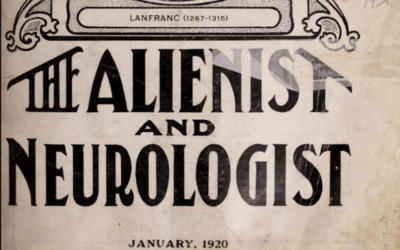
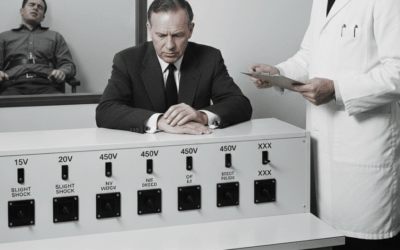




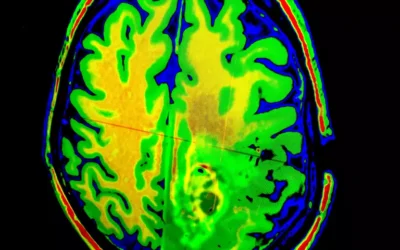




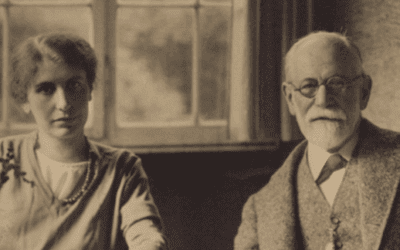












0 Comments